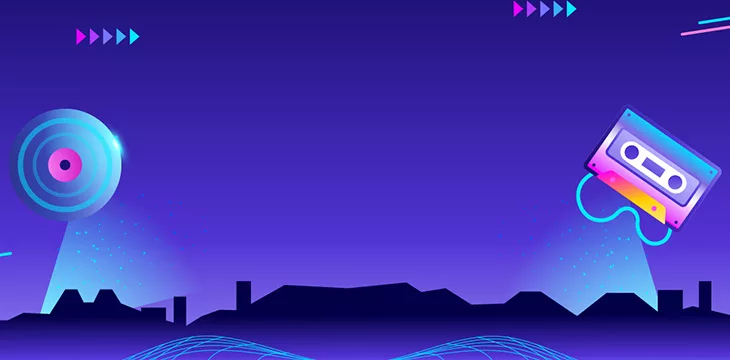Blockchain scalability issues have been rampant since the technology launched. Here, factors like speed in approving transactions can affect how many blocks get added to the blockchain. That speed can significantly deteriorate as each node validates the accuracy or quality of transactions.
Scalability is crucial to the blockchain’s growth because it determines a network’s ability to support higher transaction throughput. Simply put, a scalable blockchain can achieve high transactions per second (TPS). Better scalability means a higher capacity to perform transactions for mass usage.
Table of Contents
- Transaction Speed
- Scalable Blockchain Defined
- 5 Elements of Scalable Blockchain
- 6 Benefits of Scalable Blockchain
- Scalability is the Future
- FAQs
Scalable Blockchain Transaction Speed
Since blockchain is designed initially to cater to financial institutions, scalability becomes a top priority. Besides being a digital asset, blockchain can also solve real-life problems in healthcare, public service, security, and more.
However, blockchains have a significantly lower transaction speed of 7 TPS than other payment methods like Visa, with about 1,700 TPS. Again, scaling or achieving a higher TPS is not so simple because a set of consensus protocols binds the blockchain. These specify the format of valid transactions, who is qualified to process them, and who can add a block to a private or public-permissioned blockchain.
What is a Scalable Blockchain?
A scalable blockchain describes a network that can accommodate the processing and recording of as many transactions as possible. To achieve a high TPS, participating nodes must confirm a block promptly based on guidelines that specify the format of valid transactions and who is qualified to process and add them to the blockchain.
The size of a blockchain is another critical component in blockchain scalability. It should go without saying that a large block size can increase its transactional capacity. The goal is to keep up with the ever-increasing use and exchange of data in today’s digital landscape.
More than speed, the ability to innovate for the future is another hallmark of a scalable blockchain. Whether for business, healthcare, or education, blockchains can satisfy users’ needs by scaling the technologies they utilize daily.
5 Elements of a Scalable Blockchain
The following table summarizes the elements of a scalable blockchain. Several factors can influence a network’s ability to scale.
| Element | Description |
|---|---|
| Cost and Capacity | This refers to the amount of data the blockchain can store. Each node in the blockchain network can accommodate large data quantities if they have adequate storage capacities. |
| Networking | Nodes facilitate blockchain transactions and transmissions during mining. Since this process consumes network resources blockchains with efficient data transmission mechanism can thwart delays in validating transactions. |
| Throughput | Blockchain throughput describes the size of a block and the amount of time needed to confirm a transaction. A block with a maximum size can easily increase the number of transactions it can process. |
| Finality | Finality refers to the reliability of a blockchain in creating records that cannot be changed or altered. The more immutable the blockchain is, the more secure it is – reducing the time it takes to confirm transactions with participating nodes on the network. |
| Confirmation Time | As the name implies, confirmation time is the time that lapses between submitting a transaction to the network and recording it as a verified block. A shorter confirmation time means the blockchain can maintain an ideal processing rate. |
Cost and capacity
The capacity and cost requirements imply that the blockchain must process and record large amounts of data on the network. Recording the data is separate from storing the data. Nodes can optimize and prioritize one or both of these tasks to serve the needs of their clients. Each node in the blockchain network can accommodate large data quantities if they have adequate storage capacities.
Networking
Every transaction made on the blockchain involves all nodes. Most of the network bandwidth required is spread evenly throughout the times between block confirmations. Then, when a block is found, those nodes once again go to work by transmitting the block data across the blockchain. The extensive use of network resources throughout these processes can result in delays but not if efficient data transmission mechanisms exist.
Throughput
Blockchain throughput pertains to the size of a block and the amount of time needed to confirm a transaction in that block. Therefore, a block with a maximum size can easily increase the number of transactions it can process, verify, record, and store.
Finality
Finality refers to how reliable a blockchain is in creating immutability. The more immutable the blockchain is, the more secure it is—reducing the time it takes to confirm a transaction across all the nodes on the network.
Confirmation time
As the name implies, confirmation time is the average time that lapses between submitting a transaction to the network and recording it as a verified block. A shorter confirmation time means that any individual user can get transaction finality sooner.
6 Benefits of Scalable Blockchain
Blockchain in itself is beneficial for people and organizations using it. Here’s what you can expect when you add scalability further into the mix.
| Benefit | Description |
|---|---|
| Data Structures | Scalable blockchain provides order and prioritization in data processing. |
| Processing Power | The more scalable a blockchain is, the more opportunities it can cater to a broader community |
| Autonomy | Blockchain scalability gives users complete control of their data. |
| Immutability | Data in a scalable blockchain is tamper-resistant because of the Proof of Work consensus algorithm. |
| Transparency and auditability | It is effortless to for other nodes on the network to confirm and follow the previous transaction, thanks to timestamped blocks. |
| Security | A globally scalabe blockchain means it is secure, encouraging more entities to use it because of the reduced risk of fraund and unauthorized transactions. |
Data structures
Blockchains are already built on many enterprise networks and structures. With scalable blockchain, this expands even further, where each transaction runs on blocks and nodes. By improving the performance of elements such as throughput, finality, and confirmation time, scalable blockchains provide highly capable platforms for innumerable transactions.
Processing power
The more scalable a blockchain is, the more opportunities it can cater to a wider community. The performance of the blockchain won’t decrease as use cases and acceptance increase, creating a continuous cycle of growth.
Blockchain networks that scale to compete with legacy, centralized platforms have incredibly superior network settlement times and usability.
Autonomy
With scalable blockchain, businesses can perform their tasks and processes quickly because they have immediate access to and control over data. As such, data sharing among business organizations, employees, customers, suppliers, etc., is more straightforward.
Immutability
Data in a scalable blockchain is tamper-resistant because of the economic based Proof-of-Work consensus algorithm used. Any alteration of a previous transaction would make a block no longer validate, and as long as more blocks are built on top of it, the cost to rewrite a transaction exponentially grows with each block built on top of the last. In addition, shared replication, reverting prohibited alterations or deletions, routine database backups, and cryptographic signatures of all transactions, blocks, and votes are some methods used to accomplish this.
Transparency and auditability
Every confirmed transaction in the blockchain is timestamped and kept on the block. As a result, other nodes on the network can quickly confirm and follow the previous transaction. For instance, every transaction in Bitcoin is linked to the one before it via a hashed connection, demonstrating the auditability of the saved data.
Security
Better data security is an end goal of most, if not all, businesses. A globally scalable blockchain means it is secure, encouraging more entities to use it because of the reduced risk of fraud and unauthorized transactions.
Scalability is the Future of Blockchain Technology
The growth and mass usage of blockchain calls for its scalability. This scalability is crucial to how businesses and industries innovate their products and services to ensure fast transactions, data security, and transactional costs for technology users.
If you want to know more about blockchain and Bitcoin, CoinGeek is the perfect place to learn Bitcoin for beginners. Visit the CoinGeek blog today!
FAQs on Scalable Blockchain
Since blockchain is designed initially to cater to financial institutions, scalability becomes a top priority. Besides being a digital asset, blockchain can also solve real-life problems in healthcare, public service, security, and more.
A scalable blockchain describes a network that can accommodate the processing and recording of as many transactions as possible. To achieve a high TPS, participating nodes must confirm a block promptly based on guidelines that specify the format of valid transactions and who is qualified to process and add them to the blockchain.
The size of a blockchain is another critical component in blockchain scalability. It should go without saying that a large block size can increase its transactional capacity. The goal is to keep up with the ever-increasing use and exchange of data in today’s digital landscape.
The 5 elements of a scalable blockchain are cost and capacity, networking, throughput, finality, and confirmation time.
The 6 benefits of scalable blockchain are data structures, processing power, autonomy, immutability, transparency and auditability, and security.
The growth and mass usage of blockchain calls for its scalability. This scalability is crucial to how businesses and industries innovate their products and services to ensure fast transactions, data security, and transactional costs for technology users.
Scalable Blockchain Infographic
The infographic below will discuss the elements of a scalable blockchain.


 01-03-2026
01-03-2026 


